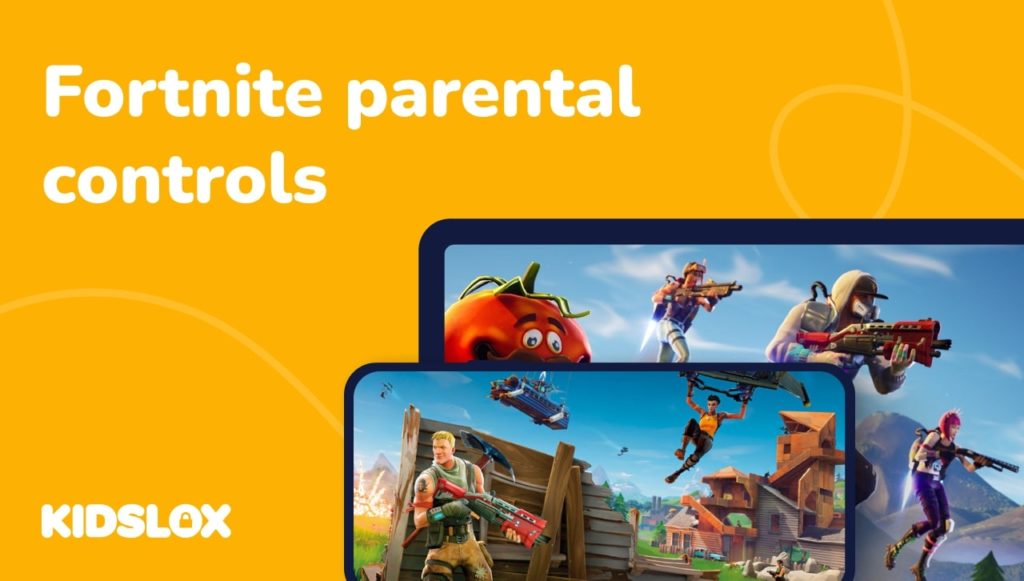Ask a child near you what is in, and you’ll hear one thing: Fortnite. With over 125 million players, this online video game has become a global phenomenon. The first-person shooter (FPS) boasts nearly 4 million concurrent players daily (25 million daily!) – that’s a lot of kids (and adults) glued to their screens!
So what is all the fuss about? Fortnite is the latest in a long line of FPS games, but it has one key difference: it’s free.
That’s right, you can download and play this game without spending a single cent. And it’s this free-to-play model that has made Fortnite so popular; anyone can pick it up and start playing without any barriers to entry.
However, as with any online game, there are some risks associated with playing Fortnite. From screen time to bullying and microtransactions, there are a number of concerns that parents may have about their children playing this game.
But don’t worry, there are some easy ways to set up parental controls for Fortnite so you can ensure your child is playing safely. In this article, we’ll run through the different parental control options available and how you can set them up.
What is Fortnite?
To understand the popularity of Fortnite, you need to know the popularity of video game FPS’s. These are games where the player experiences the game through their character’s eyes, and they use guns and other weapons to fight their enemies.
FPS games have been around for a long time, with early examples including Doom (1993) and Quake (1996). But the release of Halo: Combat Evolved in 2001 really popularised the genre.
Halo was one of the first FPS games to feature a multiplayer mode, and it’s this aspect that has made FPS games so popular. When Halo 2 was released in 2004, it took multiplayer gaming to a new level with its inclusion of Xbox Live. This allowed players to connect and play with others from around the world.
The popularity of Halo led to a boom in FPS games, with many imitators trying to capture the success of Microsoft’s franchise. And it is from this pool of games that Fortnite emerged.
Fortnite was released in 2017 by Epic Games and quickly became one of the most popular games on the market. The key to its success is its free-to-play model, which allows anyone to download and start playing without spending any money.
However, Fortnite is not just a clone of Halo or Call of Duty; it has a number of unique features that have made it the phenomenon it is today:
The game is constantly evolving: Epic Games release regular updates for Fortnite, adding new features and gameplay modes. This keeps the game fresh and prevents players from becoming bored.
There are no levels: In most games, you need to reach a certain level before you can access certain content. But in Fortnite, all content is available from the start. This means players can jump in and start playing without having to grind their way through hours of content they don’t want to play.
It’s easy to play: Fortnite is a very user-friendly game, and this accessibility has helped it reach a wider audience. Even if you’ve never played an FPS game before, you can pick up Fortnite and start playing without any problems.
It’s social: One of the key features of Fortnite is its social interaction. The game includes a number of features that encourage players to interact with each other, such as the ability to chat and add friends. This social aspect is one of the things that makes the game so addictive.
As you can see, there are a number of reasons why Fortnite has become so popular. But while the game has many positive aspects, there are also some risks associated with playing it.
What Risks Does Fortnite Pose?
We don’t need to go into too much detail to explain why video games are a cause for concern among many parents. Since their inception, video games have been blamed for a number of problems, from obesity to violence.
However, it’s important to remember that not all video games are bad for you. In fact, many studies have shown that video games can have a number of positive benefits, such as improving problem-solving skills and hand-eye coordination. It all comes down to how you engage with you child and their unique video game behaviors.
With that being said, there are certain risks associated with playing Fortnite that parents need to be aware of. These include:
Exposure to Violence
As an FPS, Fortnite features violence in the form of shooting and “killing” other players. While this violence is not realistic and often cartoonish, it can still be harmful for young children who are exposed to it.
Exposure to Strong Language
Fortnite allows players to team up with others from around the world. This means there is a risk that children will be exposed to strong language from other players.
Excessive screen time: Like any video game, Fortnite can lead to excessive screen time if not appropriately monitored. This can have a number of adverse effects on children, such as sleep problems and difficulty concentrating.
Inappropriate Connections
As Fortnite is a social game, there is a risk that children will make friends with other players who they have never met in real life. This can lead to children sharing personal information or meeting up with strangers, which can be dangerous.
Microtransactions
Fortnite uses a microtransaction system, which means players can spend real money to buy in-game using “V-Bucks”. This can lead to children spending large amounts of money without understanding its value.
Now that you know the risks associated with playing Fortnite, you may be wondering what you can do to protect your child.
How to Set Up Parental Controls for Fortnite
The good news is that you can do several things to protect your child from the risks associated with playing Fortnite. One of the best things you can do is to set up parental controls for the game.
To set up parental controls on Fortnite, you will need to go through its parent company, Epic Games. Here’s a step-by-step guide on how to do it:
Step 1: Create an Epic Games Account
If you don’t already have one, the first thing you need to do is create an Epic Games account. You can do this by going to their website and following the instructions to create a new account. If your child already has an account, you can use that.
Step 2: Set Up a Parental Control PIN
You will then need to set up a six-digit PIN that will be used to access the parental controls. You can create this PIN via the Epic Account Portal and the Parental Controls menu within the Fortnite game itself. You will use the email associated with the Epic Account to update any PIN details or recover a lost PIN.
Step 3: Choose Which Controls You Want to Set Up
Once you set up your PIN, you can use that PIN to set up parental controls in either the Epic Account or through the game itself. There are a variety of parental controls that Fortnite allows parents to control. Here are the main controls – and what each offers within the game:
Social Permissions
Social permissions cover everything from game chat to voice chat to player-to-player interactions. You can use these controls to limit the amount of social interaction your child has with other players.
Within Social Permissions, you can set three main settings:
- Friend Requests: You can set it so that only friends can send friend requests, or you can disable friend requests altogether.
- Voice Chat: You can allow all voice chat, restrict it to friends and teammates only, or disable it entirely.
- Epic Games Text Chat: You can allow all Epic Games Text chat, restrict it to friends only, or disable it entirely. When restricted, heart symbols will appear when mature language is identified within the text screen.
Purchasing Permissions
If you want to control how your child can or cannot purchase elements using Epic Games software, you can set those permissions here.
By setting the control to “On” or “Off”, you can control how your child uses their Epic account to make purchases. When set to “Off”, they will need the PIN you set for the account to make any purchases.
Content & Access Permissions
In some cases, you may wish to set restrictions on what your child can access via the Epic Games library, which includes Fortnite. If you want to limit their access to only age-appropriate content or to certain types of content, you can do so using these controls:
The content rating settings are set via ESRB settings and include:
- Everyone
- Everyone 10+
- Teen
- Mature
- Adults Only
- Unrated
Setting this will ensure that only appropriate content is visible and accessible to your child in the Epic Games library.
Playtime Reporting
The final control you can set up for Fortnite is Playtime Reporting. This will report to you (the parent) how long your child has played the game each week. This can be helpful to know so you can set limits on how much your child is playing.
If you want to know how much time your child is spending on Fortnite, you can set up the Playtime Reporting feature in the Parental Controls menu. When “On,” you will receive a playtime report to the email assigned to the Epic Games account each week. This can help set appropriate limits for your child’s playtime.
Protect Your Children Online with Confidence
Fortnite continues to be one of the most popular games among kids and teens – it’s more important than ever for parents to be aware of the potential risks associated with the game. By setting up appropriate parental controls, you can help keep your child safe while playing.
And if you want an even higher level of protection for your family’s online activity, consider Kidslox. With Kidslox, you can manage all of your family’s devices in one place, set up screen time limits, filter content, and so much more. Not only can you help to keep your children safe online – but you can also give yourself peace of mind.
Try Kidslox today and discover how to protect your family online with confidence!





